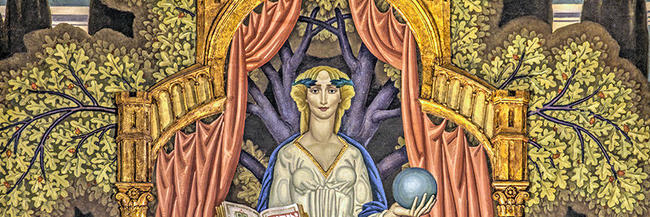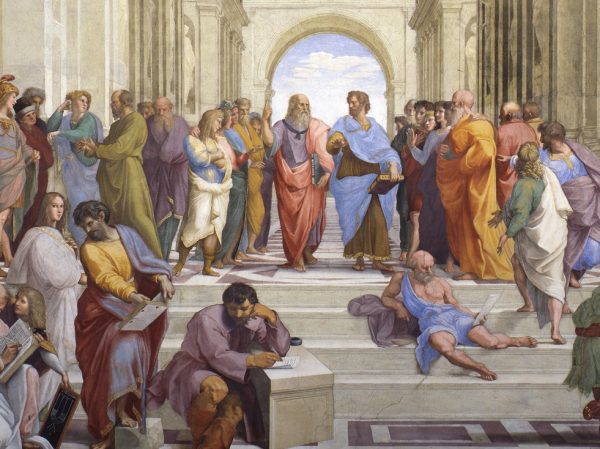Democracy and despotism in a digital age.
The Academy Must Worship—but Whom?

The case of Yale and Calvin
My generation was raised on many lies. One of the lies that we Millennials were raised on is: you can be anything you want to be. You cannot. Everyone can be some things. In America, wonderfully, many people can be many things. But time, circumstances, the human body, all constrain what any one person can become or accomplish.
This was not emphasized in our upbringing, or else it was outright denied—if not by our parents, then by our teachers and our cultural environs. It was an unspoken mantra behind our social studies lessons, our favorite movies, the advertisements aimed at us: you can be anything. An astronaut. President. Beautiful. If you want to know the wages of this particular lie, observe what people my age (I am 29) are currently doing to our bodies and our society in the name of radical transgenderism.
Another lie we were told was, God can and probably should be kept out of higher learning. I suspect this was one of the most important lies, because it was one of the ones most seldom articulated outright. Instead it was simply acted upon, made a premise of major structural changes about which we were too young to be consulted but by which we were deeply affected.
Recently I visited Calvin University, a Christian school in Grand Rapids. Mostly it looked normal to me: dorms, rec centers, classrooms, the standard college stuff. Except, of course, the whole thing was suffused with God. The banners outside the auditorium said things like “created to create” and “made in His image.”
What shocked me about this was that it shocked me. I realized that I had actually never seen slogans like that plastered openly on the walls of a university. It felt a little transgressive—scandalous, even.
I went to Yale as an undergraduate. I became a Christian shortly before my freshman year, but I would never have dreamed of going to a Christian school. Back then, I still assumed that a religiously “neutral” institution was the best place for a free and open exchange of ideas.
But as I toured Calvin, it dawned on me that my undergraduate education was not, in fact, neutral. Yale’s central library, Sterling Memorial, was purposefully built to look like a Gothic cathedral. Soon after it opened in 1930, one student called it “a bastardized version of the west portal of an abbey.” Behind the old circulation desk—visibly reminiscent of an altar—there towers a painting of Alma Mater, the university herself personified. She stands beneath the tree of knowledge and is gazed upon reverently by her children.
Sterling was part of a shift in the early 20th century, during which formerly religious schools like Yale re-imagined themselves as secular temples of learning. But the library’s own imagery makes clear that this shift did not remove religion so much as supplant it.
How could it be otherwise? Aristotle was right: the human animal is purposive down to his bones. The things he does, he does because he wants to achieve some good. His actions have a why, express or implied, or else they do not happen. Aquinas identified the Christian God as the final and ultimate good toward which all right human actions strive. This outlook, or something like it, was encoded into the medieval universities whose aesthetics helped inspire Yale’s architectural revival in the early 1900s.
By then it was becoming untenable to make religion of any kind into a backdrop for elite academic endeavor. But this did not obviate the need of a final goal. The iconography of Sterling Memorial bears witness to that fact: you cannot found an institution or even build a building without some purpose in mind. If you remove one purpose, another will slip in through the back door.
And, since purpose of the ultimate sort is worship by another name, the result of Yale’s transformation was not irreligion but new religion. The adoration of the university itself, and its supposedly secular sciences, replaced the adoration of God.
The university in 2019 cannot look in every respect like a medieval academy, nor should it. Perhaps not every school can look like Calvin, either. But Calvin, at least, is honest about whom it worships. You can read about Him right on the walls. By contrast, our secular universities are increasingly devoted to that greatest lie of all: here, we worship nothing.
This simulated nihilism—which is actually dogma by sleight-of-hand—is poisonous and cannot endure. It fosters in its students a dedication to self-destruction, most manifest in confused political agitation and desperately miserable sexual exploits. It’s the kind of thing that would drive anyone to drink, or worse, and does.
If the academy is to do anything other than crumble, therefore, its leading lights must own up to the fact that they worship. And then they must ask themselves that ancient question: whom do we serve?
The American Mind presents a range of perspectives. Views are writers’ own and do not necessarily represent those of The Claremont Institute.
The American Mind is a publication of the Claremont Institute, a non-profit 501(c)(3) organization, dedicated to restoring the principles of the American Founding to their rightful, preeminent authority in our national life. Interested in supporting our work? Gifts to the Claremont Institute are tax-deductible.
The crisis of modern liberalism and science requires skeptical political philosophy—but skeptical political philosophy is itself undergoing a crisis.
We don’t need a revolution to find political redemption.
When God recedes, nihilism takes His place.
What is the Bedrock of Being? (A reply to Alex Priou.)






